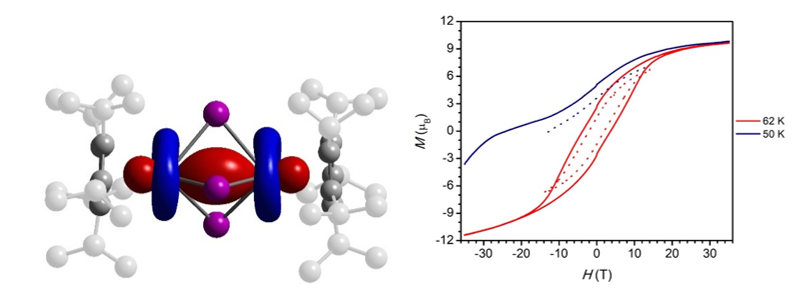Next-generation molecule-based magnetic materials
Exploring molecular magnets, this project uses quantum chemistry to study how iodide modifications affect magnetic communication in metal-metal half-bonds, aiming to design new high-performance magnetic molecules.
Groups
Project status
Content navigation
About
Magnets impact our everyday lives (e.g. electric vehicles, wind turbines) and the strongest magnets are dominated by solid-state “neodymium” Nd2Fe14B magnets. Recently we have reported a molecular magnet [Tb2(C5iPr5)2I3] that is five times stronger than Nd2Fe14B (Figure right; see Science, 2022, 375, 198). This molecular magnet is different from other materials because it possesses a direct metal-metal bond containing only a single unpaired electron (Figure left). In this project we are looking to see how chemical alterations of the bridging iodides influences the magnetic communication through the metal-metal half-bond. The student would use density-functional theory to propose new molecules with half-bonds, and then use complete active space self-consistent field calculations to determine magnetic properties of the proposed new molecules.

